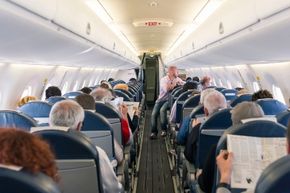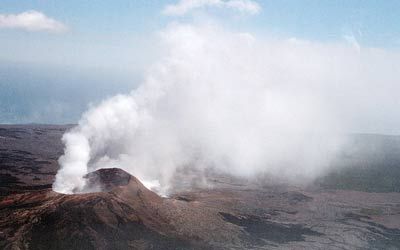It forced Washington, D.C.,-to-Dallas American Airlines flight 1053 to make an emergency landing in Nashville in December 2006: the dreaded in-flight fart [source: Shu].
Only 16 percent of American adults admit they toot their own horn while taking public transportation, although surely the other 84 percent just don't admit to it [source: Lindenbaum]. When we're flying, we're prone to a phenomenon called jet bloat — and yes, like jet lag, it's a real thing. More than 60 percent of pilots report they experience regular jet bloat [source: Robson]. And that distended, gassy feeling can only mean one thing: high-altitude, in-flight flatulence.
Advertisement
The average person can expect to pass about 1 liter (or a quart) of gas, which adds up to no fewer than 10 farts within 24 hours (and if you hold those farts in during the day, expect that gas to escape while you sleep) [source: Robson]. Fart composition varies from person to person, but it generally breaks down as 59 percent nitrogen, 21 percent hydrogen, 9 percent carbon dioxide, 7 percent methane and 4 percent oxygen. It's the remaining small percentage — less than 1 percent — of sulfur-containing gasses (including hydrogen sulfide) that gives farts their distinctive odors. And all that's needed to make that fart smellable is 1 part per 100 million parts air [source: Goldberg and Leyner].
It's not only the farts of those in the immediate vicinity that linger in the cabin; a single fart can reach speeds of up to 10 feet per second [source: Cohen]. Additionally, half of the cabin air is recirculated air — which means each fart's odor is circulating throughout the plane.
If you've ever noticed that the plastic water bottles you bring with you on your flights get a little crunched between takeoff and landing, then you already guess the answer to why we get gassy when we fly. It's all about pressure.
While we typically fly at altitudes between 33,000 to 45,000 feet (10,058 to 13,716 meters), inside the cabin it feels to us as though we're only between 6,000 and 8,000 feet (1,829 and 2,438 meters) above sea level. On the ground, the human body is accustomed to an atmospheric pressure of 760 millimeters of mercury (mmHg), but when we fly that pressure decreases to about 565 mmHg. When altitude increases, pressure decreases; when the pressure drops, volume increases.
This is the thermodynamic principle called the ideal gas law: PV=nRT, where P is the pressure of the gas, V is the volume of the gas, n is the amount of gas, R is the ideal gas constant and T is the temperature of the gas.
When the atmospheric pressure in the plane's cabin drops, the air inside your body needs more space, and the volume of gas expands — by roughly 25 percent. The greater volume of intestinal gas equals a greater number of farts and, perhaps, a couple temporary inches of bloat around your abdomen [source: Cox].
Advertisement




